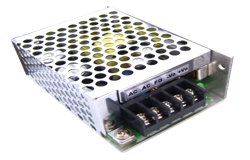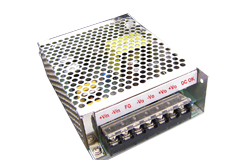noticias
How to Build a 120 Volt AC Power Supply for 3 Volt DC Output
Autor: Módulo de potencia ZYG Time: 2023-4-20
If you looking to power a small device that requires 3 volts of DC power, you may be wondering how to build a suitable power supply. One option is to build your own 120 volt AC power supply and use a voltage regulator to step down the voltage to 3 volts. Here how to do it:
Materials:
– Step-down transformer (120V AC to 12V AC)
– Bridge rectifier
– Capacitor
– Voltage regulator (LM317)
– Heat sink
– Resistors
– Potentiometer
– LED
– 3 volt DC load
– Soldering iron and solder
– Multimeter
Step 1: Choose a transformer
The first step is to choose a step-down transformer that converts the 120V AC input to 12V AC output. Make sure the transformer is rated for the amount of power you need (in watts) and that it has the correct output voltage.
Step 2: Rectify the AC voltage
Next, you need to rectify the AC voltage using a bridge rectifier. This will convert the AC voltage to a pulsating DC voltage.
Step 3: Smooth out the DC voltage
To smooth out the pulsating DC voltage, you need to connect a capacitor across the rectified output. This will help to stabilize the voltage and reduce ripple.
Step 4: Regulate the voltage
Now it time to regulate the voltage to a steady 3 volts using an LM317 voltage regulator. This can be achieved by connecting a resistor and a potentiometer to the voltage regulator, which will allow you to adjust the output voltage to 3 volts.

Step 5: Add a heat sink
The LM317 voltage regulator can get quite hot, so it important to add a heat sink to dissipate the heat. You can attach the heat sink to the voltage regulator using thermal paste or adhesive.
Step 6: Test the circuit
Before connecting your load, it important to test the circuit using a multimeter to ensure that the output voltage is stable and accurate. Adjust the potentiometer until the output voltage is exactly 3 volts.
Step 7: Connect the load
Finally, you can connect your 3 volt DC load to the output of the voltage regulator. You may also want to add an LED to indicate when the circuit is powered on.
By following these steps, you can build a 120 volt AC power supply that provides a stable 3 volt DC output for your small devices. Make sure to follow safety guidelines when working with high voltage circuits, and always test your circuit before connecting your load.
Anterior: Cómo conectar una fuente de alimentación de CA a CC
Próximo: How to Differentiate Between AC and DC Power Supply
informacion relevante
-
2023-5-7
Designing an AC-DC Converter Circuit
AC-DC converter circuits are essential components in many electronic devices such as power supplies and battery chargers. These circuits allow the conversion of AC power from the electrical grid to DC power that can be used to power electronic devices. In this article, we will discuss the design of an AC-DC converter circuit. The first step in designing an AC-DC converter circuit is to determine the input voltage and the desired output voltage. Once these values are known, the next step is to choose the appropriate transformer and rectifier components. The transformer is used to step down the input voltage to a level that is suitable for the rectifier circuit. The rectifier circuit is responsible for converting the AC voltage...
Ver detalles -
2023-10-18
Modular vs Non-Modular Power Supplies: Which Is the Better Choice?
When it comes to building a computer, one of the key components that often gets overlooked is the power supply. While it might not be as glamorous as the latest graphics card or processor, the power supply is an essential part of any computer system. It is responsible for supplying the necessary electrical power to all the components in the computer, ensuring smooth and reliable operation. However, when it comes to choosing a power supply, there are two main options to consider: modular and non-modular. In this article, we will delve into the differences between these two types and determine which one is the better choice. Firstly, let's define what modular and non-modular power supplies are. A non-modular power supply...
Ver detalles -
2023-5-27
Converting 110V AC to 12V DC: A Comprehensive Guide
Converting 110V AC to 12V DC is a common requirement in many applications, such as in automotive and marine environments, as well as in lighting and electronic devices. The process involves using a device known as a power supply or converter, which is designed to transform the high-voltage alternating current (AC) from the mains electricity supply into low-voltage direct current (DC) that can be used by electronic devices. This comprehensive guide will explain the process of converting 110V AC to 12V DC in detail. Understanding AC and DC Before discussing how to convert 110V AC to 12V DC, it is important to understand the difference between AC and DC. AC is the type of electrical current that is supplied to...
Ver detalles -
2023-6-9
DC DC Converter DPX Series: The Ultimate Solution for Efficient Power Management
Power management is one of the key challenges faced by modern electronic systems. With the growing complexity and demand for high-performance devices, power consumption has become a significant concern for designers and engineers. In this regard, DC DC converters have emerged as a popular solution for efficient power management, offering high levels of flexibility, reliability, and performance. Among the various DC DC converter series available in the market, the DPX series stands out for its exceptional features and reliable performance. Developed by one of the leading manufacturers in the field, the DPX series offers a wide range of power solutions that can cater to the diverse requirements of modern electronic devices. Features and Benefits of DC DC Converter DPX Series...
Ver detalles -
2023-4-27
AC-DC Converter Module: Turning Alternating Current into Direct Current
AC-DC converter modules are electronic devices that convert alternating current (AC) into direct current (DC). These modules are widely used in various electronic devices, such as computers, televisions, and power supplies. In this article, we will explore the functioning of AC-DC converter modules and their various applications.AC-DC converter modules are composed of several electronic components, such as diodes, capacitors, and transformers. The main function of these components is to rectify, filter, and regulate the voltage of the AC power supply. The rectifier circuit in the module converts the AC voltage into a pulsating DC voltage. The filter circuit removes the unwanted AC components from the pulsating DC voltage, resulting in a smooth DC voltage. The regulator circuit ensures that the...
Ver detalles -
2023-10-7
Fully Modular 650W Power Supply: The Ultimate Solution for Your Power Needs
Reliable power supply is crucial for the smooth functioning of our electronic devices. Whether it is for gaming, video editing, or running a home office, having a dependable power source is essential. This is where the Fully Modular 650W Power Supply comes into play. With its advanced features and cutting-edge technology, it is the ultimate solution for all your power needs. The Fully Modular 650W Power Supply is designed to provide high-quality power to your devices while ensuring efficiency and stability. Its fully modular design means that you can easily connect and disconnect cables as per your requirements, reducing clutter and improving airflow within your system. This not only enhances the overall aesthetics of your setup but also allows for...
Ver detalles


















